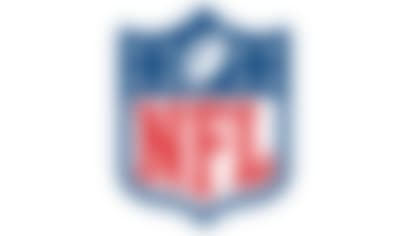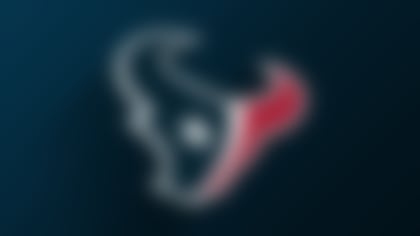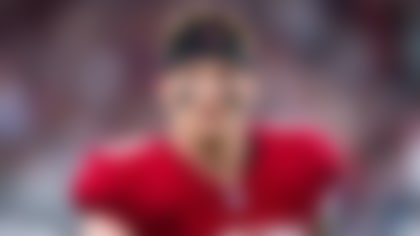There is little doubt that the 2011 NFL Draft will be driven by defensive linemen, and the prospect of 12 of them being selected in the first round is real.
Just last week, Bill Belichick told me, "We will look back on the 2011 draft, and it will be measured by the front-seven players selected in the first round."
Another coach, who owns a pick in the second half of the first round, said, "I struggle taking the ninth or 10th best guy at his position when our turn comes, but that may be the case with the way the defensive linemen will come off the board." His point being, how could a position group be so deep that you should take a player late in the round when the best prospect at another position is still on the board?
Could the 11th defensive lineman be better than the top running back or tight end? Apparently, most evaluators think so. And if they are right, this could go down as the best defensive line class in draft history.
DE draft trend expected to continue
At least three defensive ends have been taken in the first round of the draft every year since 2000. That tradition is expected to continue with 2011's deep crop of talent. **More ...**
There have been 83 defensive linemen drafted in the first round since 2000. Ultimately, 2011 might not have a dominant interior lineman like Ndamukong Suh or a Mario Williams-type defensive end, but the depth is evident. With that in mind, what are some issues facing this highly touted class?
On-the-job training
Experience counts in football, with the development of fundamentals and techniques leading to success. The top three defensive tackle prospects (Marcell Dareus, Nick Fairley and Corey Liuget) all have fewer than 20 college starts and 37 games played. Suh played in 53 college games and Gerald McCoy had 40. The class of 2011 could struggle early from the lack of experience.
As for the defensive ends, there's a bit more experience. However, Aldon Smith, J.J. Watt and Robert Quinn -- all potential top-15 picks -- have fewer than 27 starts and 18 sacks each in their careers. Mario Williams came out of North Carolina State with 36 games and 26 sacks, while Jared Allen left Idaho State with 41 games and 38 sacks. This year, Purdue's Ryan Kerrigan comes with 48 games, 35 starts, 210 tackles, 57 tackles for loss and 33.5 sacks. That's not potential that's production.
Inconsistent production
One-year wonders are another issue with this class. Take a look at Da'Quan Bowers with 15.5 sacks last year and just four in his other two seasons combined. Quinn hasn't played since 2009, when he had 11 sacks, but only came up with two the rest of his time at North Carolina. While Fairley had 11.5 sacks last season, he had just 1.5 in his only other season at Auburn.
Durability issues
The NFL is very physical, and the Tampa Bay Buccaneers rookie tackles, McCoy and Brian Price, found out the hard way, unable to finish the season for medical reasons. This class has questions in this area as well. Bowers has a knee issue that has caused his stock to drop. Adrian Clayborn has Erb's palsy, a condition that caused sporadic paralysis in his upper right arm, and has to play on the right side. Quinn has a benign brain tumor. Smith played with a leg injury in 2010 and missed a few games. Cameron Heyward had offseason elbow surgery.
Will they live the game?
Character and off-the-field decisions can bring a player down long before his playing days are over. That means understanding your body is your business, and you have to prevent yourself from eating your way out of the league, making good decisions with money, following the rules the team sets forth, and not associating with questionable people are all part of future success.
This class has some concerns in this area, but I will say that most of the top defensive linemen I interviewed appear to understand what they did wrong should not happen again. Even so, clubs have had to factor in things like Bowers once played at 300 pounds instead of the 280 he was at the NFL Scouting Combine. Liuget has also had issues with conditioning and weight in years passed. Quinn, Dareus and Marvin Austin have all faced NCAA suspensions or dismissal from the team. The big question in this area is twofold. What will a young man with money in his pocket and much less structure than the college campus atmosphere do in the NFL?
Latest mocks all in one place
Our writers and analysts examine how the first round could unfold. Find out the direction each team is projected to take when they're on the clock in
Situation has to be a good fit
Scheme and stability of the coaching staff will play a large role in the eventual success of the 10 or 11 defensive linemen selected in the first round. Any of the prospects drafted specifically to fit a scheme -- say Fairley as a solid 4-3 under tackle -- and then there's a coaching change a year from now where the new regime brings in a 3-4 that could spell problems.
That's the reason teams like Cameron Jordan from Cal. He's viewed as versatile and has the skills to adjust to different schemes. With so many guys going in the first round and so many coaching changes on an annual basis, a few of these top picks will find themselves in the wrong place at the wrong time.
Time will tell
There are just too many defensive line prospects who will go in the first round for a few not to stick and become future Pro Bowl players. This class should be better than the 2007 draft, when the NFL thought enough of six defensive linemen to go in the first round.
However, they might not produce two players like the class of 2006 (Mario Williams and Haloti Ngata) or the 2001 first round that produced Richard Seymour, Marcus Stroud, Casey Hampton, Justin Smith, Andre Carter, Damione Lewis, and Ryan Pickett.



